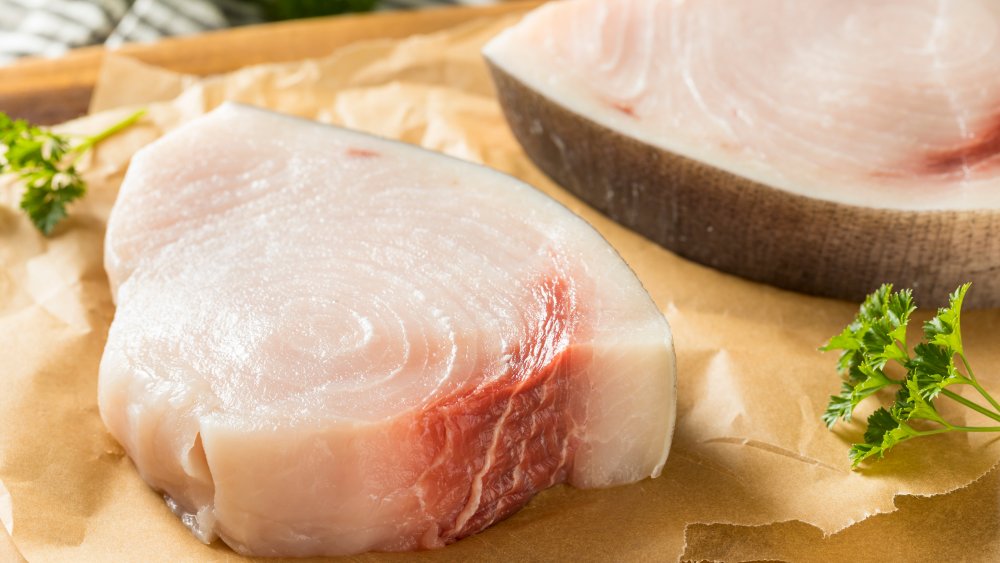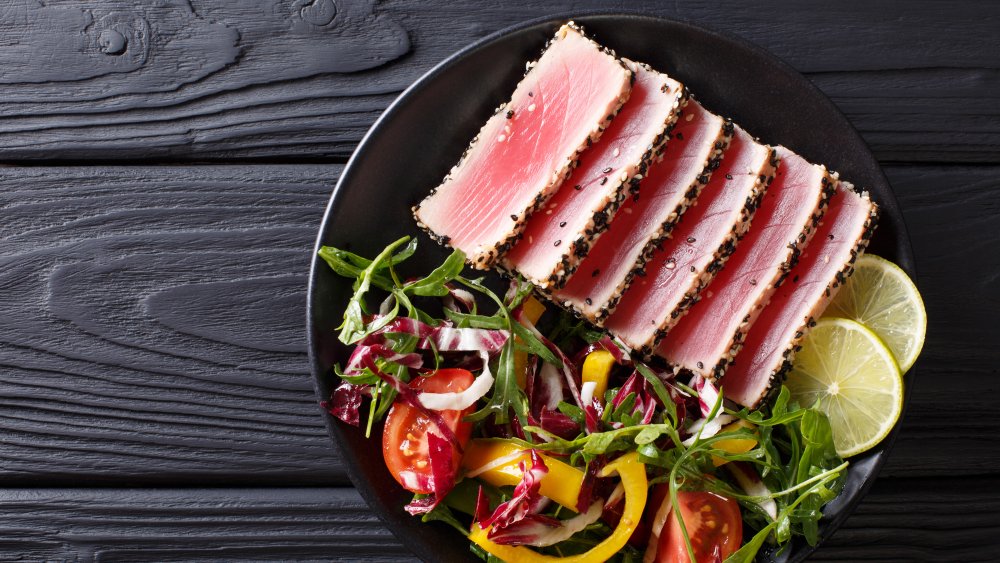Here Are The Fish That Contain The Most Mercury
Mercury finds its way into water systems for a number of reasons. Although it's a naturally-occurring mineral in the environment and can leech into water from soil and rocks, it's also released into the atmosphere when fossil fuels or trash are burned, or during forest fires (via The North Carolina Department of Health and Human Services). It then falls into bodies of water carried by ash particles or rain.
Once mercury enters the body of water, it's absorbed by aquatic microorganisms, which are, in turn, eaten by small fish. The mercury binds to the protein in the fish and builds up over the lifetime of the animal. Cleaning or cooking the fish does not do anything to remove mercury.
Thus, as a rule of thumb, larger fish tend to have higher mercury content than smaller fish. Fish like tuna, swordfish, marlin, king mackerel, and shark have large levels of mercury in their meat (via NCDHHS).
Mercury concentrations in fish
Whereas fish like anchovies have a mean mercury concentration of .016 parts per million and pollock has a mean mercury concentration of .031 parts per million, marlin has a mean concentration of .485 parts per million, king mackerel has .730 parts per million, and swordfish has a whopping .995 parts per million (via Food and Drug Administration). While these numbers seem small, it's important to remember that they can build up in the body and it can take a very long time to expel it through waste (via the Agency for Toxic Substances and Disease Registry).
Mercury is particularly dangerous to the brains and nervous systems of developing children, and the earlier it's introduced to the body the more damage it can do.
As a result, pregnant women are advised against eating fish with high mercury content as are children under the age of six (via Natural Resources Defense Council). A conservative estimate from the Environmental Protection Agency estimated that some 75,000 babies are born in the United States each year with a higher risk of developing learning disabilities due to the mother's mercury intake. The Natural Resources Defense Council believes that the number is closer to 265,000.

